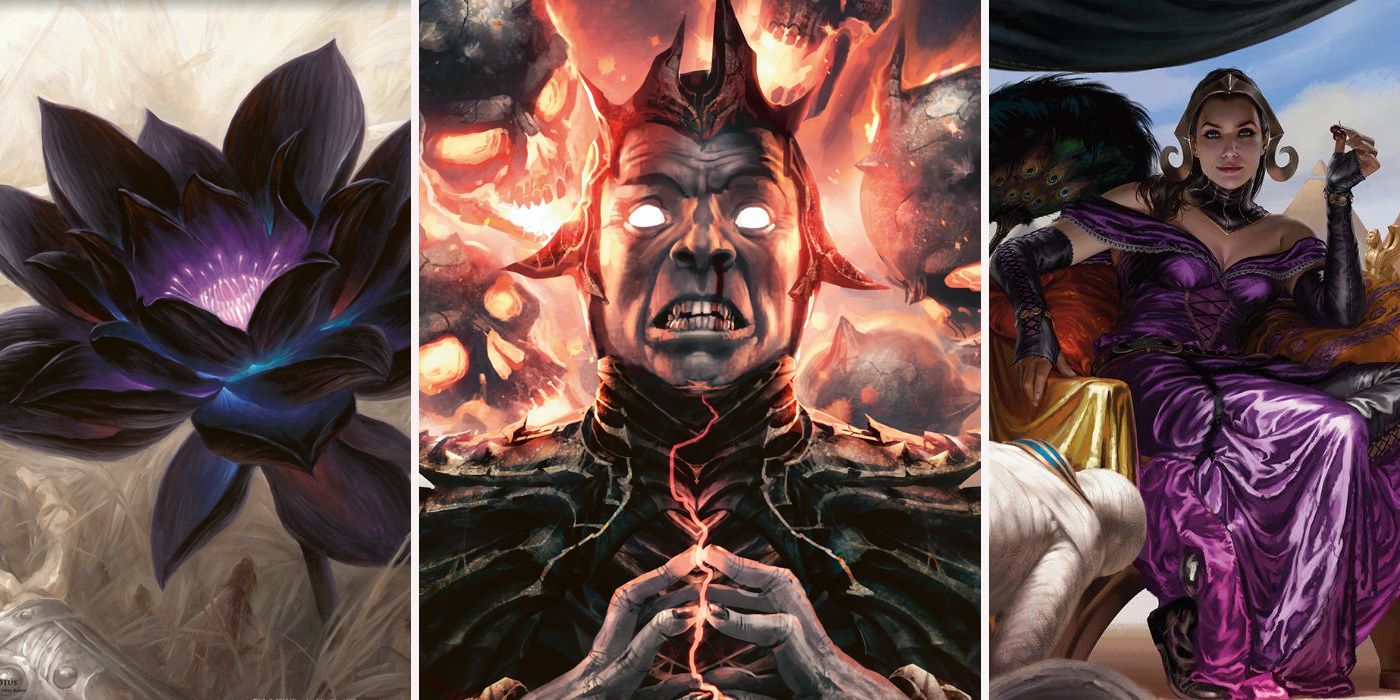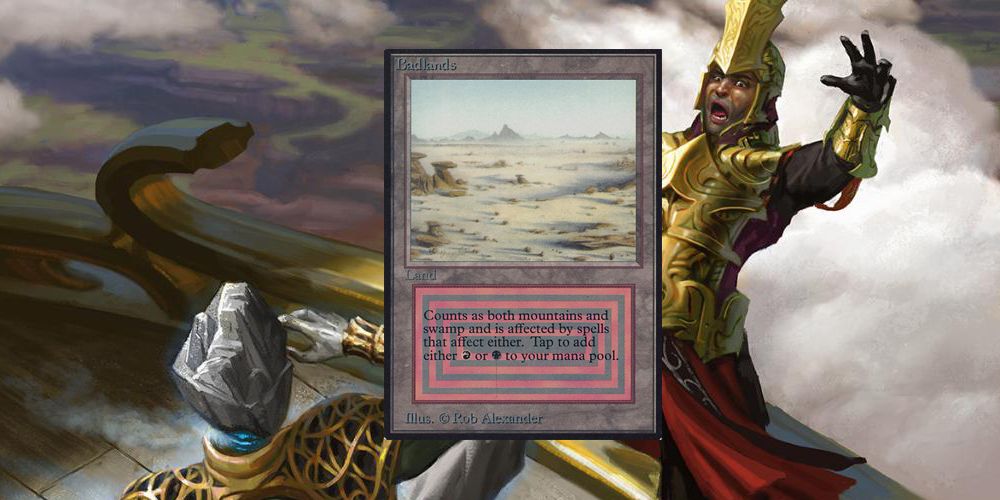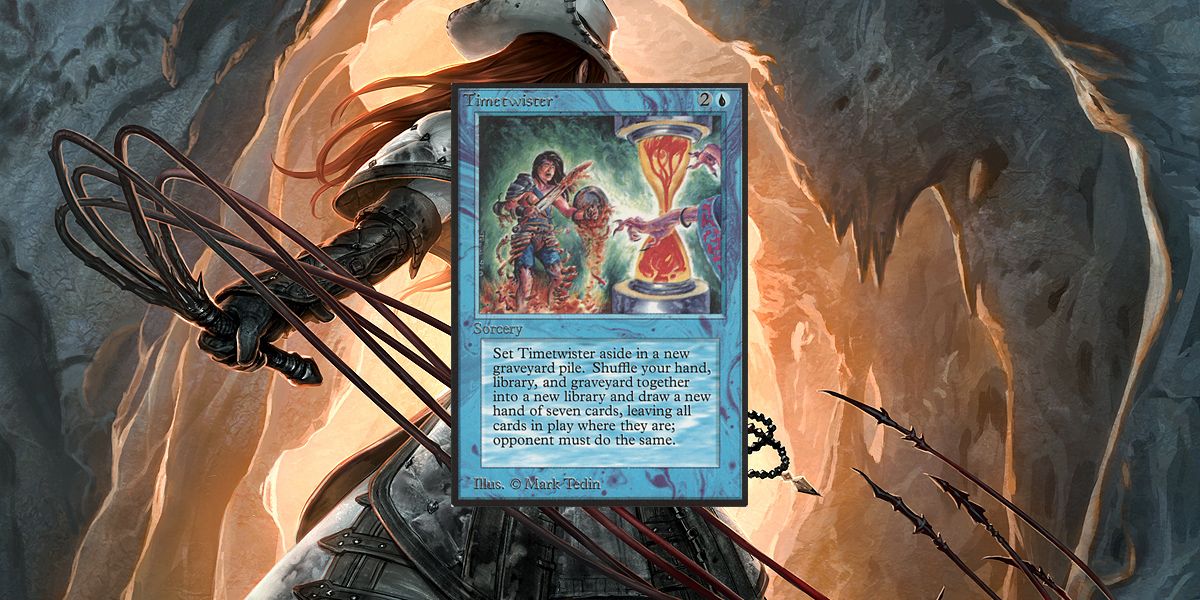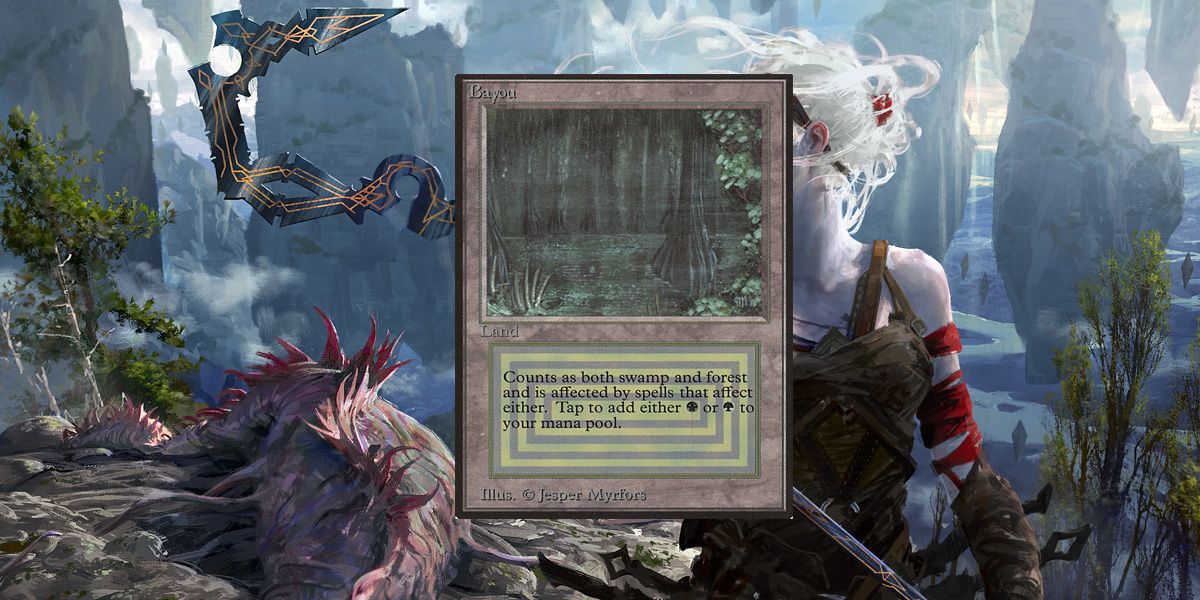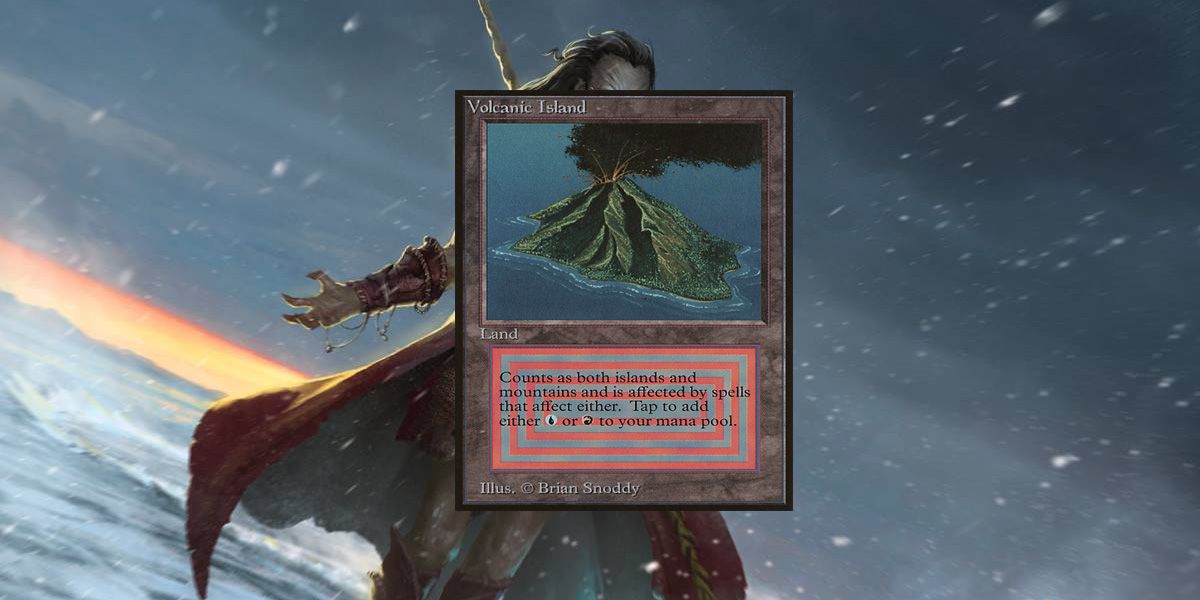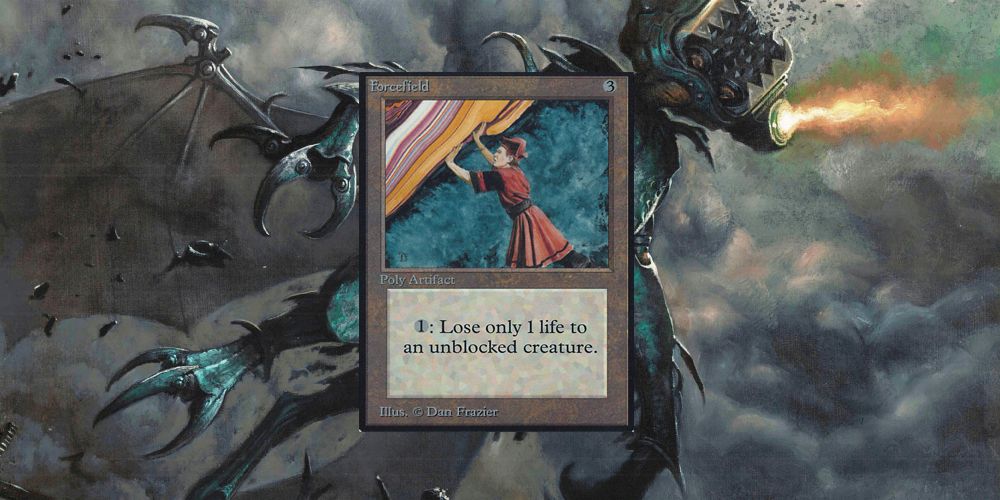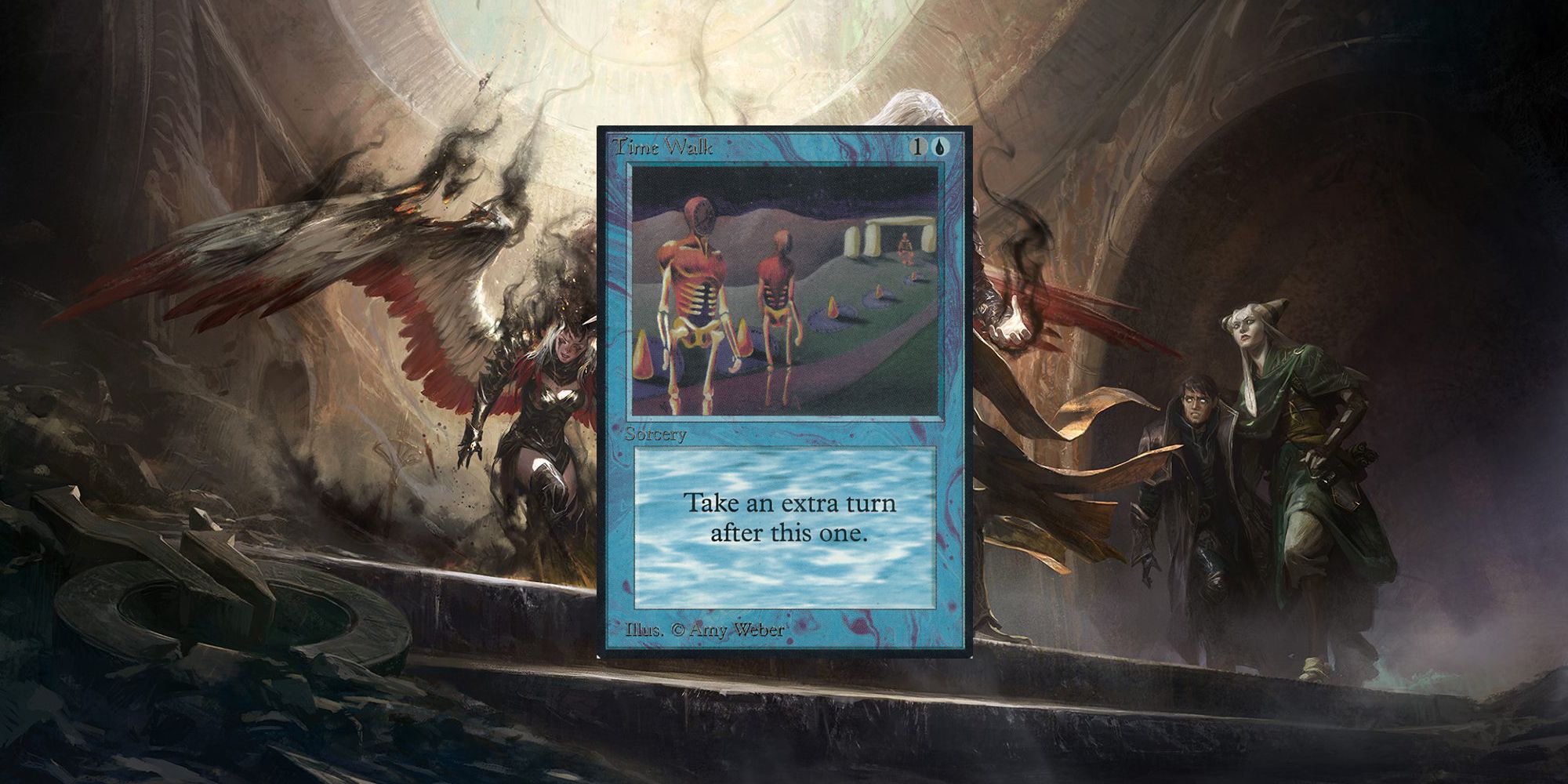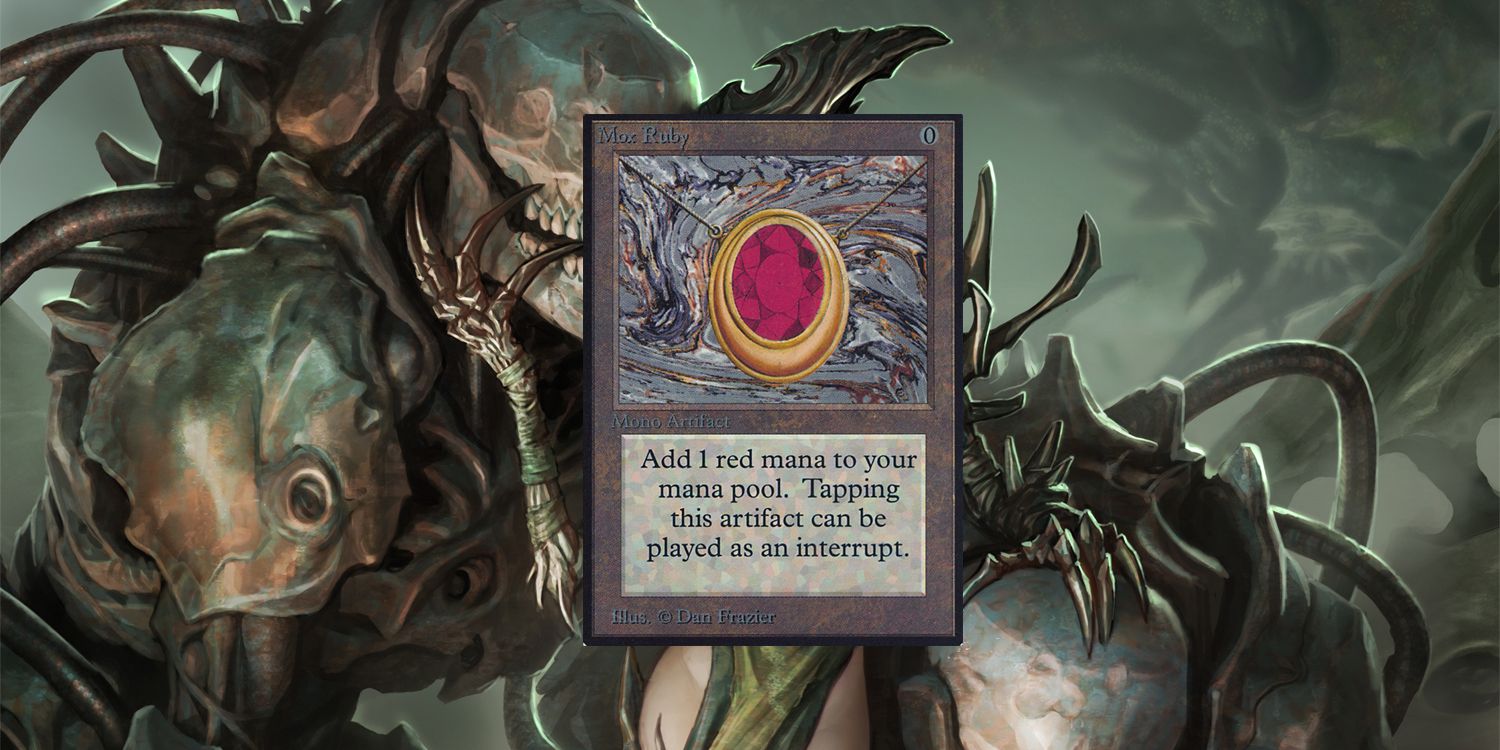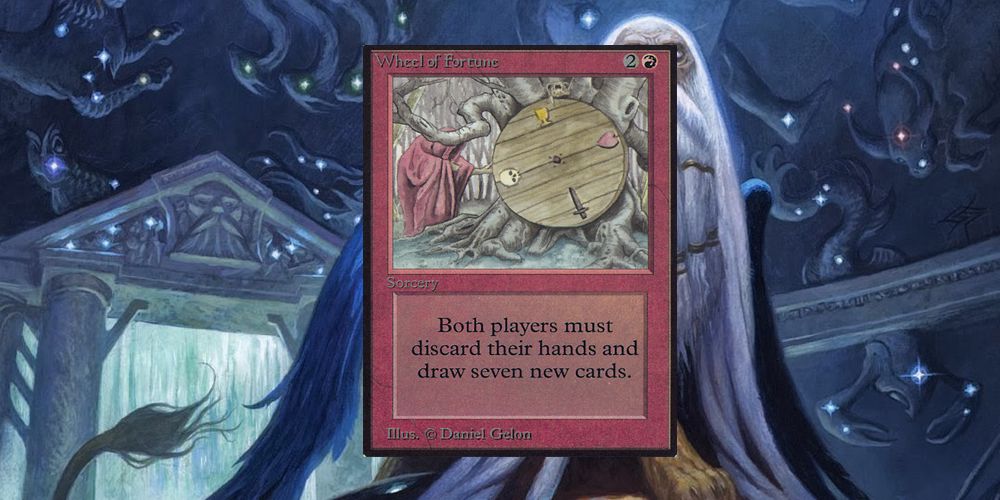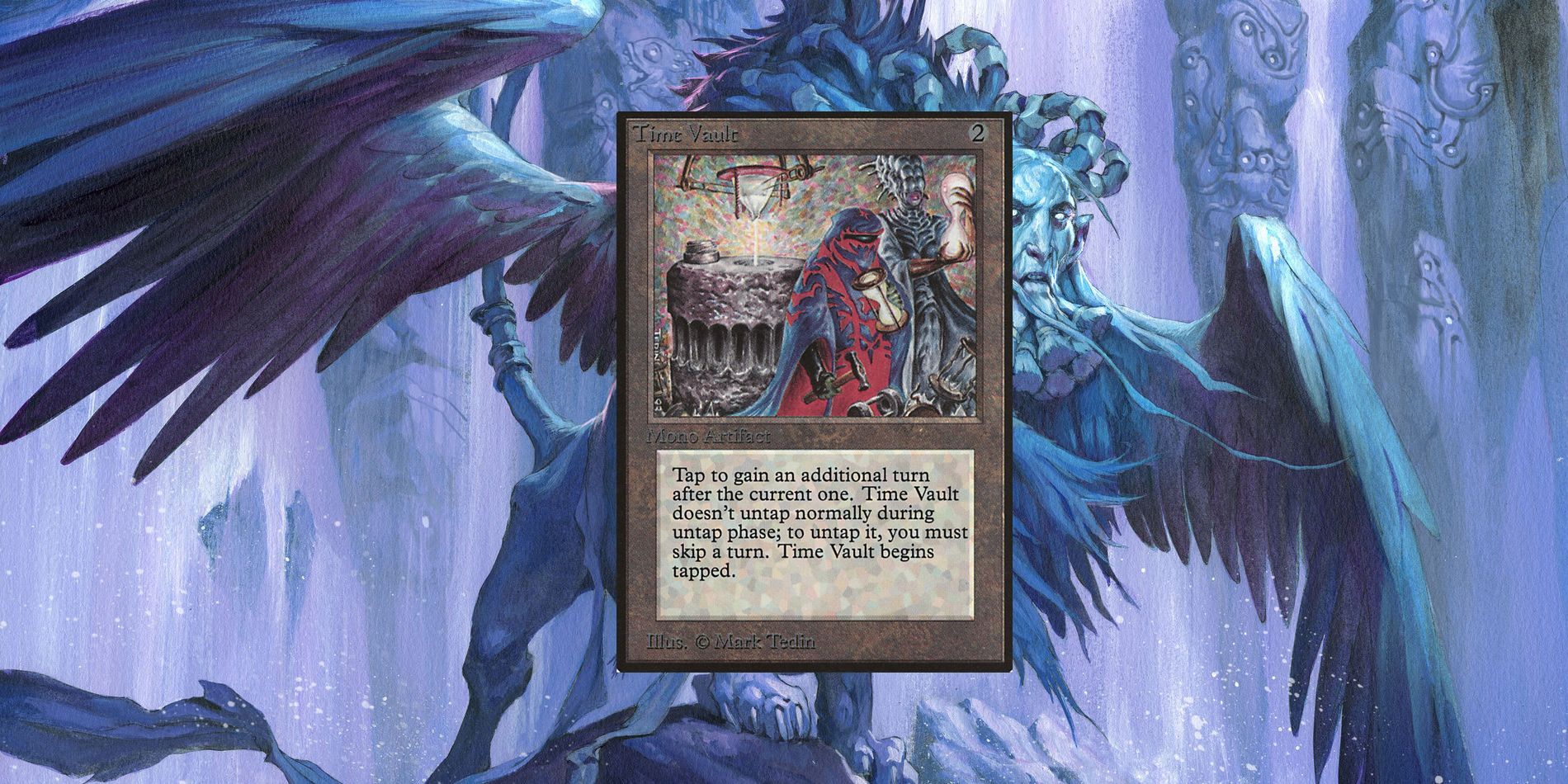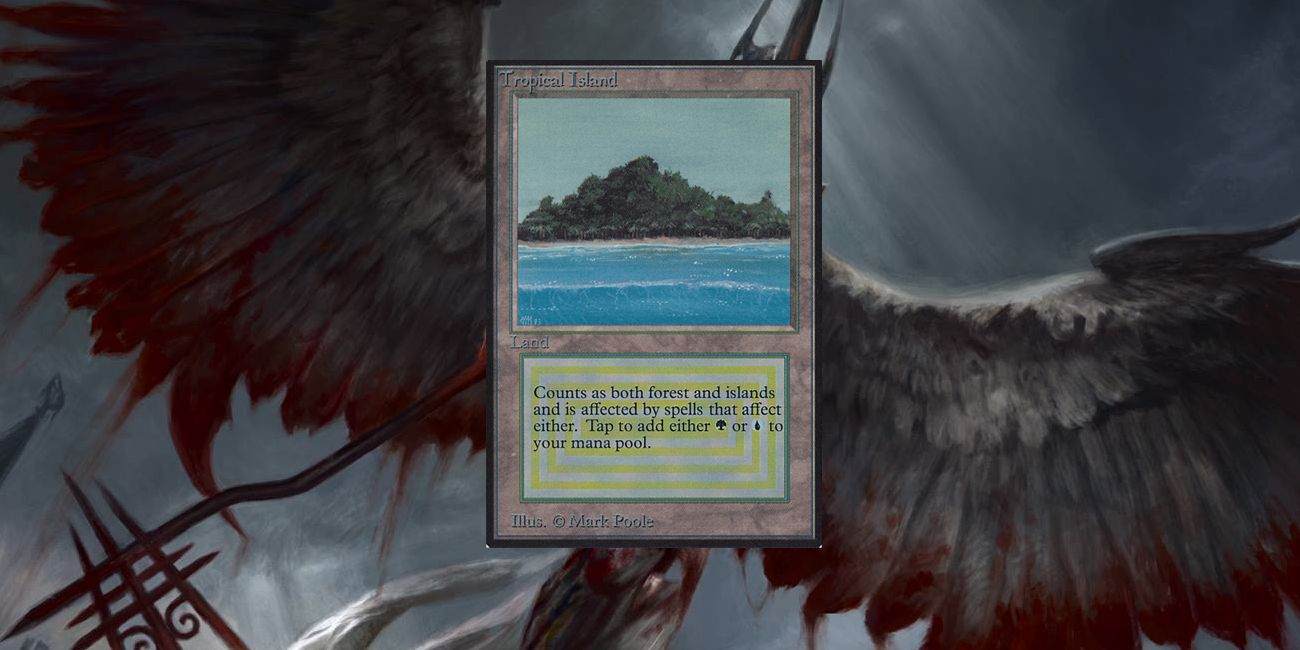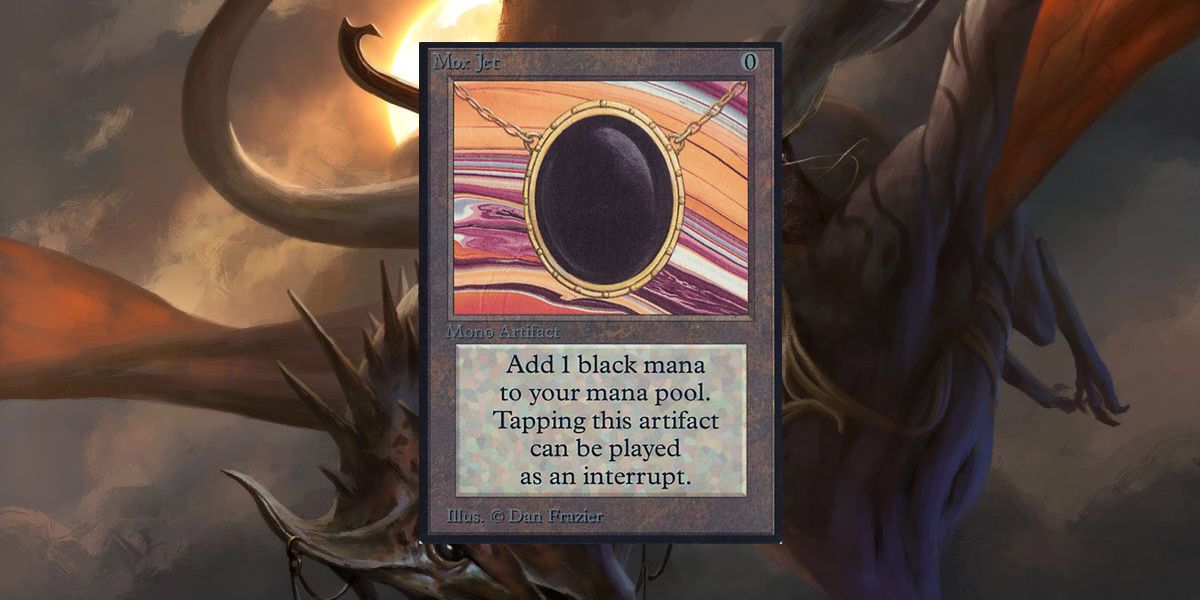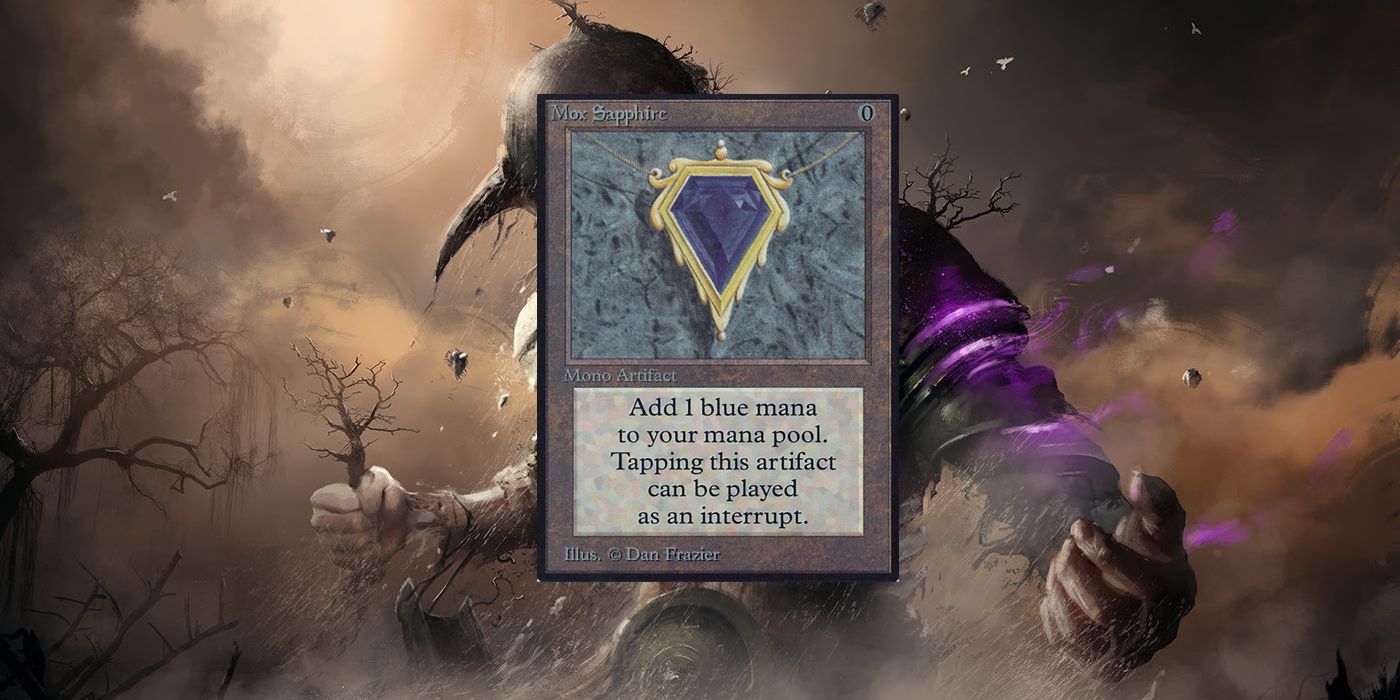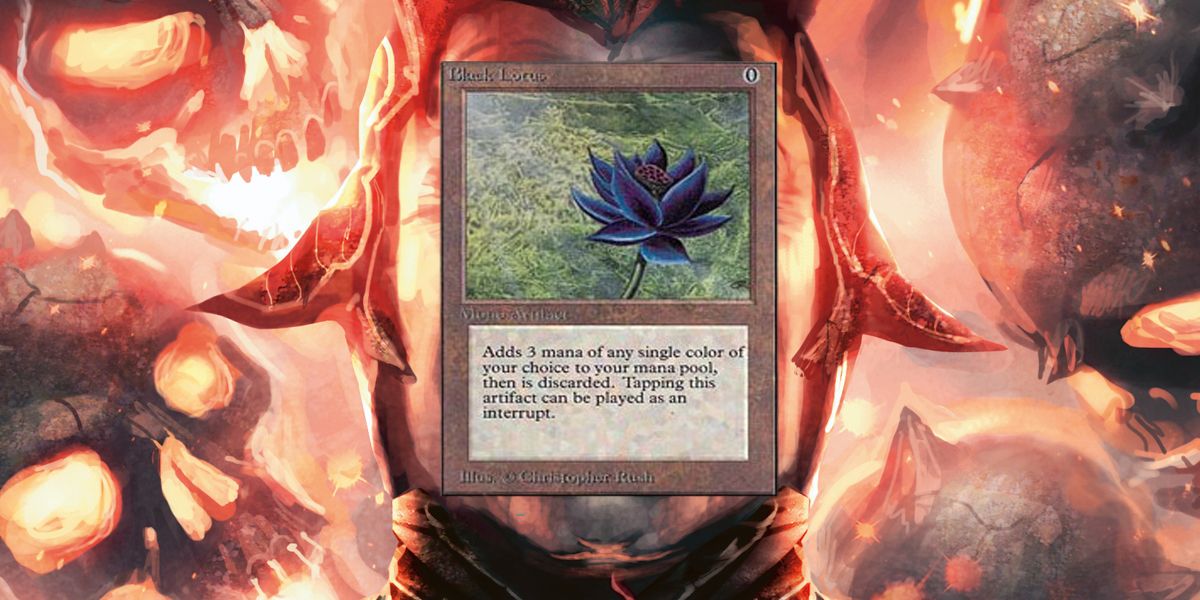Magic: The Gathering debuted in 1993. It didn't take long for the game to take off and become an international sensation. As the game became more popular, there was more demand for new cards. Magic: The Gathering soon started putting out regular new sets, with their own rare and valuable cards.
There are some Magic: The Gathering cards that are worth a lot of money. A single piece of painted cardboard can be worth thousands of dollars to the right person. There are a few factors that determine this, such as the age and rarity of the card.
The quality of the card is also a big factor, as no one cares about how rare a card is if it is being held together by tape. These cards also tend to belong to sets that aren't legal in competitive formats, which means that they are bought strictly for collection purposes, rather than having any actual use in the game.
We are here today to look at the painted pieces of cardboard that are probably worth more than your car-- from the powerful wasteland, to the accursed flower that still lingers on in the memories of Magic: The Gathering players.
Here are the 15 Most Valuable Magic: The Gathering Cards!
15. Badlands
Magic: The Gathering is a game about resource management. In order to play monsters or magical effects, you need to play Land cards to the field. You can tap each Land once per turn to produce a specific kind of mana, which you can then use to pay for the costs of other cards.
Your rate of success in a game is often defined by how many Lands you draw in the first turn, as not having many will prevent you from playing other cards.
The early sets of Magic: The Gathering featured rare Lands that had the ability to produce two different kinds of mana. This was a highly useful effect, as it made it a lot easier to play decks that used multiple kinds of cards.
Badlands is one of the earliest dual Land cards. It can be tapped for either a single point of red or black mana. The Limited Edition Alpha version of the Badlands card is worth around $1700, depending on its condition.
14. Timetwister
The first set of Magic: The Gathering had many cards that seem overpowered compared to the ones that would come later. This would lead to the formation of a ban list that would stop the more unbalanced cards from taking over the competitive scene. The most notable entries on the ban list are the "Power Nine," which is a group of nine cards that were completely broken.
Timetwister is one of the weakest members of the Power Nine because of how situational it is. Using Timetwister effectively resets the game with the exception of the cards on the table. If correctly used, a Timetwister can give you a massive advantage over your opponent.
You can use it to return all of your most powerful cards to your deck while forcing the opponent to draw a whole new hand which might put them at a disadvantage, all for the measly cost of three mana.
The Limited Edition Alpha version of Timetwister is worth around $1800, depending on its condition.
13. Bayou
The term "Dual Land" is the common name given to any Land card that produces two different kinds of mana. The first few Magic: The Gathering sets included ten Dual Land cards, which included every possible mixture of colors.
These cards were highly prized for the ability to make it easier to play multiple colors, which contributed to their value. This has diminished somewhat over the years, as variants of the Dual Land cards have been released, along with a few rare Triple Land cards.
Bayou is a Dual Land that produces either green or black mana. This has been a powerful combination in certain Magic formats, due to its sheer ability to put monsters on the field and return them from the graveyard at a moments notice if something powerful enough does manage to kill them.
The Limited Edition Alpha version of Bayou is worth around $1800, depending on the condition of the card.
12. Volcanic Island
A common occurrence among the earlier Magic: The Gathering sets was printing errors. Many cards were printed that had incorrect information, such as misspelled names, missing power and toughness scores, and listing the wrong kind of mana needed to play them. Wizards of the Coast are far more competent at the production of the cards, so these mistakes rarely happen anymore.
Volcanic Island had the biggest error of all, as it wasn't even printed in the set that it was supposed to appear in.
The other Dual Land cards mainly appeared throughout the Alpha set. Volcanic Island was also meant to be printed in Alpha, but a screw up with the production of the cards meant that it had to be pushed back to the Beta set.
Volcanic Island is a Dual Land card that generates either a blue or red mana. The Limited Edition Beta version of the card is worth around $3000, depending on the condition of the card.
11. Forcefield
Magic: The Gathering helped create the terminology that a lot of competitive card games use, such as "tap" (the act of playing a card) or "trample" (the excess damage a card deals to a monster is dealt to the player). There are some card games that have tried to create their own terminology, such as the Final Fantasy Trading Card Game, but most people just use the Magic terms.
There are some terms that are no longer used in Magic games. Forcefield carries one such term, as it is referred to as a Poly Artifact. You might think this means that Forcefield has multiple romantic partners, but it actually means that the Artifact's ability can be used without tapping it as a cost.
Forcefield allows you to prevent the amount of damage a monster deals for the cost of a single mana. The Limited Edition Alpha version of Forcefield is worth around $1800, depending on the quality of the card.
10. Time Walk
The Power Nine (which formed the basis for the original Magic: The Gathering ban list) contained several blue cards that had the ability to temporarily break the rules of the game in various ways. One of the most notorious cards that could do this was Time Walk.
For the cost of two mana, you could take an extra turn once the current one had concluded. If you used another Time Walk during your extra turn, then you would get another extra turn after that.
Time Walk was broken for a lot of reasons. The ability to take multiple turns was powerful enough on its own, as it prevented the enemy from countering while you continued to draw cards. If you possessed a card that allowed you to return or play a Sorcery from the graveyard, then you could repeatedly take extra turns until you defeated the enemy.
The Limited Edition Alpha version of Time Walk is worth around $3000, depending on the quality of the card.
9. Mox Ruby
The Power Nine contained five cards which are referred to by the fans as the Mox Jewels or Mox Gems. These are artifacts that allow you to gain an additional point of mana per turn. The Mox Jewels essentially acted as an extra Land that you could play per turn.
You are usually limited to only being able to play one Land per turn, so the ability to get a similar kind of effect out onto the field is a powerful one. You could also potentially play multiple Mox Jewels in a single turn, to further boost the amount of mana you can create, which would allow you to quickly play high cost cards.
The first Mox Jewel we will look at today is the Mox Ruby. It allows you to generate an extra point of red mana per turn. The Limited Edition Alpha version of Mox Ruby is worth around $2700, depending on the quality of the card.
8. Wheel of Fortune
Each of the five colors in Magic: The Gathering has their own archetype, which has been mostly adhered to over the course of the game's history. Black cards are all about demons and the undead, which ties into their ability to destroy other monsters outright and return cards from the graveyard.
Blue cards are all about aquatic creatures and powerful Sorcery effects that allow you to bend or break the rules of the game. Green cards are all about nature, which gives them the ability to summon legions of weak monsters that are backed up by giants.
Red cards are all about destruction and war, which ties into their powerful spells and monsters. White cards are all about angels and knights, which reflects their ability to heal and support each other.
Wheel of Fortune is an unusual card, in that it seems to break the established archetypes of the game. It is a red card that forces both players to discard their hands and draw seven cards, which really feels more like a blue effect than anything else.
The Limited Edition Alpha version of Wheel of Fortune is worth around $1900, depending on the quality of the card.
7. Time Vault
It's not unusual to see overpowered cards receive watered-down updates in later versions of the game. This is something that every competitive card game is guilty of in some capacity.
Magic: The Gathering has seen weaker iterations of the Mox Jewels and the Black Lotus, while Yu-Gi-Oh! has seen different versions of the Pot of Greed card that pale in comparison to the simple genius of the original.
On the surface, Time Vault seems like an attempt to be a more balanced version of Time Walk. This isn't the case, as it came out in the same set. Time Vault gives you an extra turn, but it cannot be untapped unless you skip a turn.
This is still an incredibly broken card, as an extra turn for two mana which can be played by any color is almost better than Time Walk, as you don't need to run a blue deck in order to play it.
The Limited Edition Alpha version of Time Vault is worth around $3500, depending on the quality of the card.
6. Tropical Island
The early printings of the Dual Land cards presented an unusual question concerning the rules. Are these cards considered to be the same as either of the original Lands that produce mana in terms of a card effect that lists one of them, or are they considered to be both... or neither?
The later printings of the Dual Land cards managed to settle the issue by adding more text. To use the Tropical Island as an example: it counts as both a Forest or Island for the purposes of effects that target either of those cards.
This makes them more susceptible to card effects that target Lands. This is considered to be an official errata which is supposed to include the early printings of the card, but the question of the classification for Dual Lands did persist for a while before it was clarified.
The Limited Edition Alpha version of Tropical Island is worth around $3700, depending on the quality of the card.
5. Mox Jet
The five Mox Jewels were instantly pegged as being too powerful, due to their ability to generate a lot of mana during the early turns of the game. Their presence essentially turned Magic: The Gathering into a game of money over skill, as these cards were worth a lot of cash even during the early days of the competitive scene.
There were several attempts to make more balanced versions of the Mox cards, though these were quickly banned in various formats. The most notorious of these was Mox Opal, which allowed you to generate a point of mana of any color, but you couldn't use it unless you had three other artifacts already on the field.
This is actually a pretty easy requirement to fulfill, which meant that Mox Opal was even better in some regards than its forebears.
Mox Jet is an artifact that allows you to generate an extra point of black mana per turn. The Limited Edition Alpha version of Mox Jet is worth around $3700, depending on the condition of the card.
4. Underground Sea
One of the most common and useful color combinations used in decks in Magic: The Gathering is black and blue, which is often referred to as a Bruise deck. There are many different reasons for this, depending on the format and the set in question.
The most common reason is that black cards have the ability to remove powerful enemy creatures from the field, whilst also being able to return cards from the graveyard. This protects the player long enough for the blue spells to be used and then reused.
Underground Sea is the most expensive of the Dual Land cards. It produces either a black or blue mana, which makes it a powerful force to be reckoned with when used in Bruise decks.
The Limited Edition Alpha version of Underground Sea is worth around $5600 and the Limited Edition Beta version of the card is worth around $6000, depending on the condition of the card.
3. Mox Sapphire
The most valuable member of the Mox Jewels of the Power Nine is the Mox Sapphire. This is the one that grants you an additional blue point of mana every time it is used. One of the reasons for this is because of how powerful blue cards were in the original set of Magic: The Gathering.
Blue's ability to temporarily alter the rules of the game hadn't been properly gauged in relation to the competitive scene at large, which meant that they were far more powerful than the other cards in the game.
There is a reason that the Power Nine is made up of Artifacts and blue cards. The Artifacts allowed any deck to gain more mana than they would normally be able to acquire, while the blue cards gave you the ability to draw more cards, gain extra turns, and essentially reset the game.
The Limited Edition Alpha version of Mox Sapphire is worth around $6100, depending on the condition of the card.
2. Ancestral Recall
Yu-Gi-Oh! was once just a show about an Egyptian guy and a world that took a card game too seriously. The card game itself became a big hit in the real world, which meant that it didn't take long for players to pick the rules apart by the seams.
It was discovered that a Yu-Gi-Oh! card's usefulness could be defined in how many cards it granted you or how many it prevented the opponent from using. This is why Pot of Greed was almost universally used in every deck because it gave a +1 hand advantage.
Ancestral Recall offered a huge advantage for the cost of a single point of blue mana. It allowed you to draw three cards, which gave you lots more options. There is no hand size limit in Magic: The Gathering, which means that multiple uses of the card can allow you to access most of your deck at a moments notice.
The Limited Edition Alpha version of Ancestral Recall is worth around $6500, depending on the condition of the card.
1. Black Lotus
The undisputed king of the Magic: The Gathering cards in terms of dollar value is the original Black Lotus. This is the kind of card that transcends the game, as a wild Black Lotus card being pulled from a deck is the kind of thing that makes gaming news sites. This is a card that offers a lot of power to the player... so long as they have the cash to pay for it.
Black Lotus is a single use artifact that gives you three mana of any color. This allows the player to pull out a far more powerful card at early turns than they should normally be able to play. The Black Lotus is banned in most formats save for Vintage, though you aren't likely to see one in play unless Scrooge McDuck enters the tournament.
The value of a Limited Edition Alpha Black Lotus varies depending on a lot of factors. Depending on the condition of the card, it isn't unheard of for an original Black Lotus to fetch over $250000 dollars at auction. They have also been known to go as low as $150000.
---
Can you think of any other extremely valuable Magic: The Gatherin cards that we missed? Let us know in the comments!

